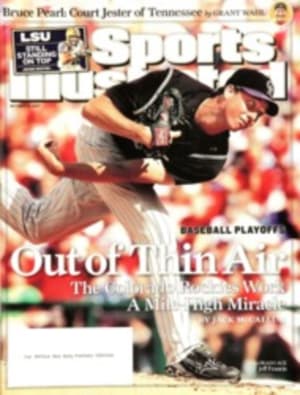
The Cube's Big Comeback
THE RUBIK'S CUBE world championship unfolded in a Budapest hotel last weekend, a three-day event in which speed cubers raced the clock to complete not only the classic 3√ó3√ó3 cube but also the 4√ó4√ó4 and the tortuously difficult 5√ó5√ó5. In other divisions, competitors cubed one-handed, blindfolded or with their feet. The 263 cubers, from 33 countries, squared off on multicolored podiums as onlookers watched from congress-hall seating or on jumbo screens. There were 170 media members on hand, including 15 TV crews. Last Saturday's report in the London Times began on page 1. The popularity of speed cubing is at an alltime high.
Cubing's prestige division remains the 3√ó3√ó3 (for his average solving time of 12.46 seconds, Japan's Yu Nakajima earned about $7,000), and among the fastest Americans is 18-year-old Ryan Patricio, of Temecula Valley, Calif., who in June won the U.S. Open, and a trip to Budapest, with an average time of 14.92 seconds. For Patricio and the current wave of young speed cubers this is serious sport. He practices several hours a day, often wearing headphones blasting frenetic music in order to simulate, he says, the distractions and pressure of competition. Patricio, like all elite cubers, aims to refine both his mental acuity—known in cubing as "look ahead," or the ability to map out moves before executing them—and his physical prowess, pure turning speed. Competitors commonly suffer from a repetitive stress injury known as "cuber's wrist," and nearly all spray the inside of their cubes with a silicone lubricant. "I can do five turns a second," says Patricio, who began cubing competitively in 2004.
The Rubik's Cube is the brainchild of Hungarian designer Ernö Rubik, who patented it in 1974 and whose rare appearance at last weekend's worlds was, to the cubing set, a bit like Yoda descending into a Star Wars convention. After the cube arrived in the U.S. in the early 1980s and became, in the vernacular of the toy industry, "the best-selling puzzle of all time," it spent years alongside Cabbage Patch Kids and Ninja Turtles in bargain bins. Its current surge is an outgrowth, generally, of '80s nostalgia and, particularly, of its cameo in the 2006 movie The Pursuit of Happyness, in which Will Smith charms a prospective employer by completing the cube in the back of a taxi. U.S. sales, according to the distributor Winning Moves Games, went from about 200,000 units a year in the early aughts to more than three million last year.
Only a tiny percentage of cube buyers ever complete it—it is vexing enough that it has caused epileptic seizures. ("Essentially, it appeals to our appetite for gratuitous difficulty," says Robert Remez, a cognitive scientist at Columbia University. "It's like gymnastics.") Tyson Mao, who cofounded the World Cube Association in 2004 and coached Will Smith for Happyness, estimates that fewer than 1,000 people in the U.S. can do the cube in under a minute. Fewer still can do it in competition. "Any athlete can tell you about that pressure," says Mao. When American cubers pull off a swift completion, they tend to spike the cube to the podium—a kind of "that's what I'm talkin' about" gesture.
Of course, aside from getting props in speedcubing.com chat rooms, the rewards for cubing greatness are few—although Mao did parlay his Rubik's fame into a berth on last year's reality show Beauty and the Geek. That, he says, was especially awe-inspiring to his peers, given the dearth of women in and around competitions. "The dating population is pretty thin," Mao says. "You'll have better luck at a chess tournament."
Click This
OF ALL the thankless football tasks, long snapping might be the one most taken for granted; you only hear a long snapper's name when a punter is corralling a misfired football. But the Texans' Bryan Pittman (right) might bring glamour to the position: He's a master of his craft—he has never made a bad snap in five NFL seasons—and a good sport. Recently a sports anchor from Houston's Fox affiliate took Pittman, 30, out to demonstrate his skills, having him snap groceries into a cart, swish a football from half-court and snap one through the window of a moving car from 50 feet away. In the video, which can be seen at SI.com/clickthis, Pittman is as accurate with a pineapple as with a pigskin—and he doesn't mind when construction workers on a lunch break say they've never heard of him.
PHOTO
BELA SZANDELSZKY/AP (COMPETITION)
PHOTO
KAROLY ARVAI/REUTERS (BLINDFOLDED COMPETITOR)
CUBIST PERIOD Those squaring off in Budapest competed in several divisions, including one-handed and blindfolded.
PHOTO
KLAUS HACKENBERG/ZEFA/CORBIS (RUBIK'S CUBE)
PHOTO
MYFOXHOUSTON.COM (PITTMAN IN STORE)
PHOTO
BOB LEVEY/WIREIMAGE.COM (PITTMAN KNEELING)

